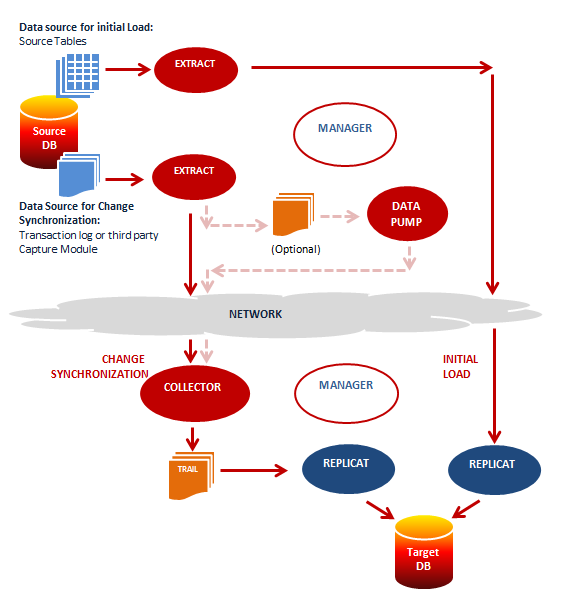Metadata Only PDB Clones in Oracle Database 12c Release 1 (12.1.0.2)
The 12.1.0.2 patchset introduced the ability to do a metadata-only clone. Adding the NO DATA clause when cloning a PDB signifies that only the metadata for the user-created objects should be cloned, not the data in the tables and indexes.
Create a clean PDB, then add a new user and a test table with some data.
CONN / AS SYSDBA
CREATE PLUGGABLE DATABASE pdb10 ADMIN USER pdb_adm IDENTIFIED BY Password1
FILE_NAME_CONVERT=('/u01/app/oracle/oradata/cdb1/pdbseed/','/u01/app/oracle/oradata/cdb1/pdb10/');
ALTER PLUGGABLE DATABASE pdb10 OPEN;
ALTER SESSION SET CONTAINER = pdb10;
CREATE TABLESPACE users
DATAFILE '/u01/app/oracle/oradata/cdb1/pdb10/users01.dbf'
SIZE 1M AUTOEXTEND ON NEXT 1M;
CREATE USER test IDENTIFIED BY test
DEFAULT TABLESPACE users
QUOTA UNLIMITED ON users;
CREATE TABLE test.t1 ( id NUMBER);
INSERT INTO test.t1 VALUES (1);
COMMIT;
SELECT COUNT(*) FROM test.t1;
COUNT(*)
----------
1
SQL>
#################################################################################################
Perform a metadata-only clone of the PDB using the NO DATA clause.
CONN / AS SYSDBA
ALTER PLUGGABLE DATABASE pdb10 CLOSE;
ALTER PLUGGABLE DATABASE pdb10 OPEN READ ONLY;
CREATE PLUGGABLE DATABASE pdb11 FROM pdb10
FILE_NAME_CONVERT=('/u01/app/oracle/oradata/cdb1/pdb10/','/u01/app/oracle/oradata/cdb1/pdb11/')
NO DATA;
ALTER PLUGGABLE DATABASE pdb11 OPEN READ WRITE;
-- Switch the source PDB back to read/write
ALTER PLUGGABLE DATABASE pdb10 CLOSE;
ALTER PLUGGABLE DATABASE pdb10 OPEN READ WRITE;
Checking the contents of the test table in the new PDB show the table is present, but it is empty.
CONN / AS SYSDBA
ALTER SESSION SET CONTAINER = pdb11;
SELECT COUNT(*) FROM test.t1;
COUNT(*)
----------
0
SQL>
#################################################################################################
Restrictions;
The NO DATA clause is only valid is the the source PDB doesn't contain any of the following.
Index-organized tables
Advanced Queue (AQ) tables
Clustered tables
Table clusters
If it does, you will get the following type of error.
SQL> CREATE PLUGGABLE DATABASE pdb11 FROM pdb1
FILE_NAME_CONVERT=('/u01/app/oracle/oradata/cdb1/pdb1/','/u01/app/oracle/oradata/cdb1/pdb11/')
NO DATA;
CREATE PLUGGABLE DATABASE pdb11 FROM pdb1
*
ERROR at line 1:
ORA-65161: Unable to create pluggable database with no data
SQL>
The 12.1.0.2 patchset introduced the ability to do a metadata-only clone. Adding the NO DATA clause when cloning a PDB signifies that only the metadata for the user-created objects should be cloned, not the data in the tables and indexes.
Create a clean PDB, then add a new user and a test table with some data.
CONN / AS SYSDBA
CREATE PLUGGABLE DATABASE pdb10 ADMIN USER pdb_adm IDENTIFIED BY Password1
FILE_NAME_CONVERT=('/u01/app/oracle/oradata/cdb1/pdbseed/','/u01/app/oracle/oradata/cdb1/pdb10/');
ALTER PLUGGABLE DATABASE pdb10 OPEN;
ALTER SESSION SET CONTAINER = pdb10;
CREATE TABLESPACE users
DATAFILE '/u01/app/oracle/oradata/cdb1/pdb10/users01.dbf'
SIZE 1M AUTOEXTEND ON NEXT 1M;
CREATE USER test IDENTIFIED BY test
DEFAULT TABLESPACE users
QUOTA UNLIMITED ON users;
CREATE TABLE test.t1 ( id NUMBER);
INSERT INTO test.t1 VALUES (1);
COMMIT;
SELECT COUNT(*) FROM test.t1;
COUNT(*)
----------
1
SQL>
#################################################################################################
Perform a metadata-only clone of the PDB using the NO DATA clause.
CONN / AS SYSDBA
ALTER PLUGGABLE DATABASE pdb10 CLOSE;
ALTER PLUGGABLE DATABASE pdb10 OPEN READ ONLY;
CREATE PLUGGABLE DATABASE pdb11 FROM pdb10
FILE_NAME_CONVERT=('/u01/app/oracle/oradata/cdb1/pdb10/','/u01/app/oracle/oradata/cdb1/pdb11/')
NO DATA;
ALTER PLUGGABLE DATABASE pdb11 OPEN READ WRITE;
-- Switch the source PDB back to read/write
ALTER PLUGGABLE DATABASE pdb10 CLOSE;
ALTER PLUGGABLE DATABASE pdb10 OPEN READ WRITE;
Checking the contents of the test table in the new PDB show the table is present, but it is empty.
CONN / AS SYSDBA
ALTER SESSION SET CONTAINER = pdb11;
SELECT COUNT(*) FROM test.t1;
COUNT(*)
----------
0
SQL>
#################################################################################################
Restrictions;
The NO DATA clause is only valid is the the source PDB doesn't contain any of the following.
Index-organized tables
Advanced Queue (AQ) tables
Clustered tables
Table clusters
If it does, you will get the following type of error.
SQL> CREATE PLUGGABLE DATABASE pdb11 FROM pdb1
FILE_NAME_CONVERT=('/u01/app/oracle/oradata/cdb1/pdb1/','/u01/app/oracle/oradata/cdb1/pdb11/')
NO DATA;
CREATE PLUGGABLE DATABASE pdb11 FROM pdb1
*
ERROR at line 1:
ORA-65161: Unable to create pluggable database with no data
SQL>
